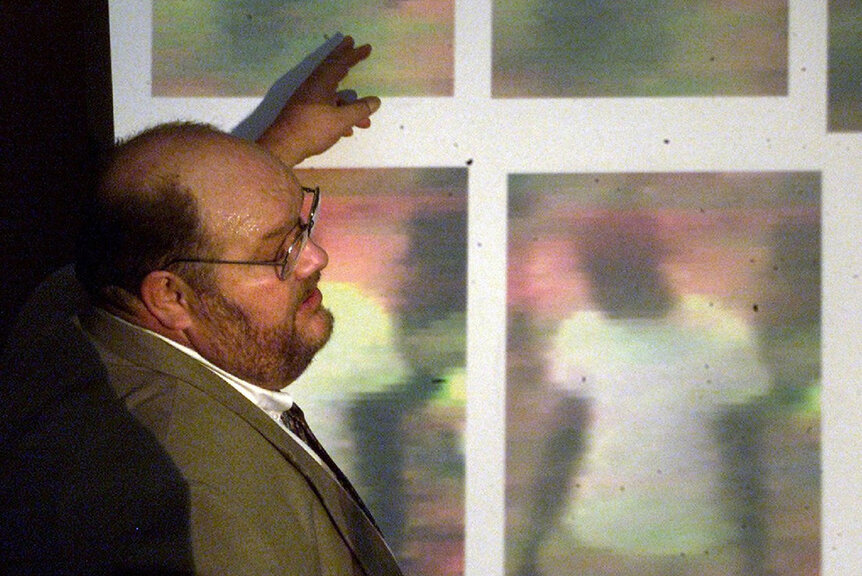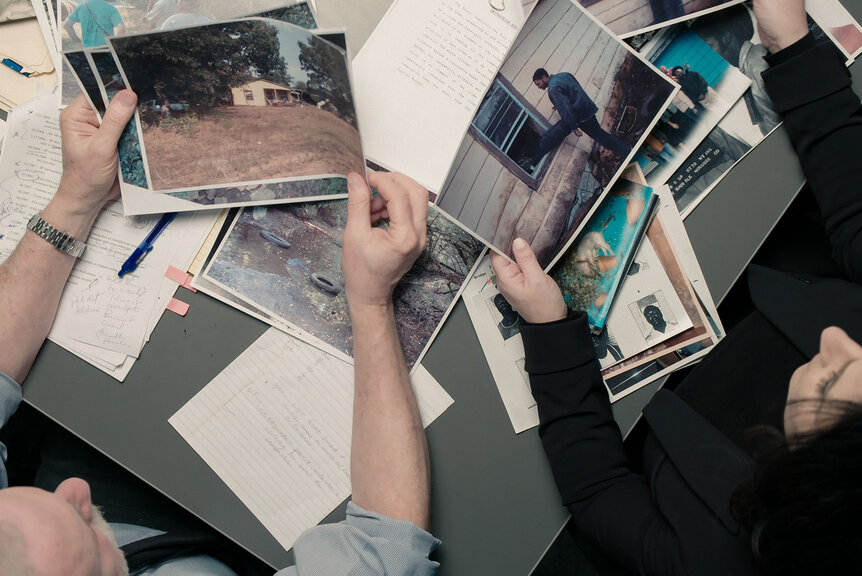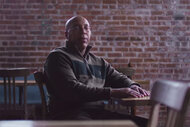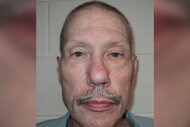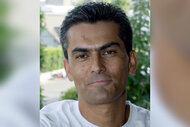Create a free profile to get unlimited access to exclusive videos, breaking news, sweepstakes, and more!
'They Want To Erase Me From History:' Bite Mark Analyst Dr. Michael West Bristles At Criticism Of Him And His Work
Dr. Michael West is unapologetic in Netflix's "The Innocence Files" about the dubious bite mark analysis he conducted, which led to convictions that have since been overturned.

“The Innocence Files” doesn’t just focus on the lives of eight people who were wrongly convicted. It also hones in on the flawed evidence that put them behind bars in the first place.
One forensic expert’s work helped lead to the convictions of several individuals whose cases the Innocence Project, a nonprofit legal organization devoted to exonerating wrongly convicted people, has worked on. Two of those cases — the murder convictions of Levon Brooks and Kennedy Brewer for the deaths of 3-year-olds Courtney Smith and Christine Jackson, respectively — were featured prominently in Netflix’s new docuseries “The Innocence Files.” Also featured prominently was that expert himself: Dr. Michael West, whose bite mark analysis contributed to both men’s convictions.
Smith was found dead in a pond after being taken from her Noxubee County, Mississippi home in the middle of the night in 1990. She'd been brutally sexually assaulted and murdered. Eighteen months later, in 1992, Jackson was found dead in eerily similar circumstances. She too was taken from her home, also in Noxubee, as she slept before being sexually assaulted and dumped in a creek. Each girl had what authorities believed were bite marks on their bodies.
After rounding up a number of suspects in Smith's murder, authorities obtained molds of their teeth to conduct tests. West concluded that the suspected bit mark on Smith's body came from Brooks. In Jackson's death, he also used bite mark analysis to assert that Brewer was responsible for 19 bite marks on the girl's body. West even went so far as to say the bite marks found on Jackson were “indeed and without a doubt inflected [sic] by Kennedy Brewer.”
Both men were convicted, but neither turned out to be responsible. Brooks and Brewer were exonerated in 2008 after the girls’ real killer, Justin Albert Johnson, confessed to the murders. He also denied biting the victims at all, further calling into question the efficacy of West's bite mark analysis; during the course of their own investigation, the Innocence Project's expert attributed the so-called human bite marks to crayfish who were feeding on the corpses before they were discovered.
West’s work was harshly criticized in that case as well as in the case of others.
Who is West?
West attended the Louisiana State University School of Dentistry before going on to study forensic dentistry at the Armed Forces Institute of Pathology in Washington D.C.. Later, he attended the American Academy of Forensic Science. He said in the docuseries that he has 29 years of experience doing death investigation work, spent 15 years working in a coroner’s office and five years as a chief medical examiner. According to his own accounting, he has investigated more than 5,200 deaths, attended more than 5,800 autopsies and analyzed more than 300 bite marks. It’s the bite marks that brought him the most attention. By the 1980s, he'd become a world-renowned forensic odontologist who testified at numerous criminal trials.
"Mike West was a pioneer in the field of forensic odontology at that time,” forensic odontologist Dr. Adam Freeman told the producers of “The Innocence Files.”
As the docuseries shows, West utilized "direct comparison" when analyzing bite marks, placing teeth molds from suspects straight onto victims’ cadavers. West told Oxygen.com that “direct comparison” provides the most accurate results. However, this practice has been criticized as inaccurate and subjective. For example, a video of him seemingly forcing a mold onto a corpse in 1993 was criticized as evidence fabrication, The Huffington Post reported in 2011.
However, he was condemned long before that.
“I felt like he was a quack, which is why I wanted him absolutely discredited,” Thomas Kesler, a public defender who represented Brewer at his initial trial told “The Innocence Files” filmmakers.
He was even criticized by his own colleagues, including forensic odontologist Dr. Richard Souviron, who brought bite mark analysis into the limelight after his testimony in the Ted Bundy trial. While West told Oxygen.com that he once looked up to Souviron, he said they’ve since had a falling out.
Souviron said that West’s analysis of Jackson’s body was simply wrong. He testified for the defense that it was animal predation, not human bites, that left those marks.
“Dr. West was 110% wrong,” Souviron said in the docuseries about Jackson's murder. “None of those marks were bite marks”
In particular, he said that all 19 of the so-called bite marks on Jackson would have had to have been the product of upper teeth only.
"There's no such thing as a bite mark with only the upper teeth,” Souviron said.
To this day, however, West maintains that all the marks were bite marks and that Brewer was the culprit. He told Oxygen.com that he feels like he conducted his research flawlessly. However, he admitted that an ethical committee — of which Souviron was a member — criticized him in 1994 for using the term “indeed and without a doubt” when talking about suspects in bite mark analysis cases. He had even been discredited before Brewer’s trial, the first member ever to be suspended from the American Board of Forensic Odontology.
Dr. Niki Osborne, a forensic research scientist based in New Zealand who studies decision-making and reliability in forensic sciences, previously told Oxygen.com that making such declarative statements is inappropriate. She said it can be declared that a bite mark “cannot exclude” a suspect as its source, actually criticizing Souviron's work in the Bundy trial. She said that skin is not a precise impression material, thus it cannot create perfect matches. Chris Fabricant, Director of Strategic Litigation for the Innocence Project, previously told Oxygen.com that the Innocence Project searches for cases where a conviction is based on bite mark evidence because those cases are usually so flimsy.
Where is he now?
Even though Johnson confessed to killing both girls alone in 2008, West said he still believes that the bite marks belong to Brooks and Brewer. While he accepts Johnson's confession to the murders, he told Oxygen.com he doesn’t think Johnson acted alone. He also added that he thinks the juries in each cases didn’t convict solely on his bite mark analysis; he said other factors came into play for the guilty verdicts.
Brewer and Brooks weren’t the only cases West worked on whose convictions were later overturned. The 2001 convictions of two women, Leigh Stubbs and Tammy Vance, which were based in part on bite mark analysis conducted by West, were overturned in 2012, according to the Innocence Project.
West is now retired and still living in Hattiesburg, Mississippi.
“I’m 67, overweight, diabetic and I think I’m going to die of boredom because of coronavirus,” he said. “In the background I can hear my father yelling ‘Suck it up, buttercup, ain’t nobody shooting at you.'”
West said his father, who was a war veteran, also would have criticized him if he pondered whether he had PTSD from handling so many dead bodies. He said over the years, the work he has done has weighed on him.
“When you are doing the work you have to do it as a biological specimen,” he said. “The person laying on that table is a frog in a jar but over the years that frog becomes a little girl who was raped and killed and it wears on you.”
He said, while getting emotional, that one girl in particular reminded him of his daughter.
West said he never wants to be near another autopsy again, unless it was John F. Kennedy or another historical figure of personal interest to him.
He said he still thinks bite mark analysis is valid, but claims that a lot of amateurs don't execute the science properly. He said in 2011 that it should no longer be used in court, according to the Innocence Project, but clarified to Oxygen.com that he feels that way because of what he calls amateur practitioners.
But he remains defensive about his own work.
“If you don't like the way I do it, get off your dead ass, go to the morgue every weekend, spend it with 15 or 20 dead babies, come out of there without being a fruitcake," he said in the docuseries, adding that he's just the messenger relaying what the evidence shows.
He told Oxygen.com that he is not perfect, though he strives to be.
“What have I done wrong?" he said. "I go to the morgue, take pictures of a dead body at 3 o'clock in the morning, then later the pictures are analyzed, opinions are made. Now all of a sudden I'm the bad guy? I’m not the guy who raped and killed or had something to do with the raping and killing of that 3-year-old.”
“You would think I'm evil incarnate,” he said in the docuseries, referring to Google searches he's recently done of himself.
He also defended himself, in the docuseries and in his interview with Oxygen.com, against charges that he's racist. He told Oxygen.com that during his career he appointed the first African-American deputy coroner.
“I've testified against just as many whites as I have blacks,” he said. "I testify for the evidence.”
But he also offered his thoughts on the debate surrounding the removal of confederate statues in public places throughout the south, even drawing a comparison to the way he feels he's been treated.
“Taking it away does not better anything,” he said. “Erasing history is ignorant. It benefits no one.”
“They want to erase me from history.”
